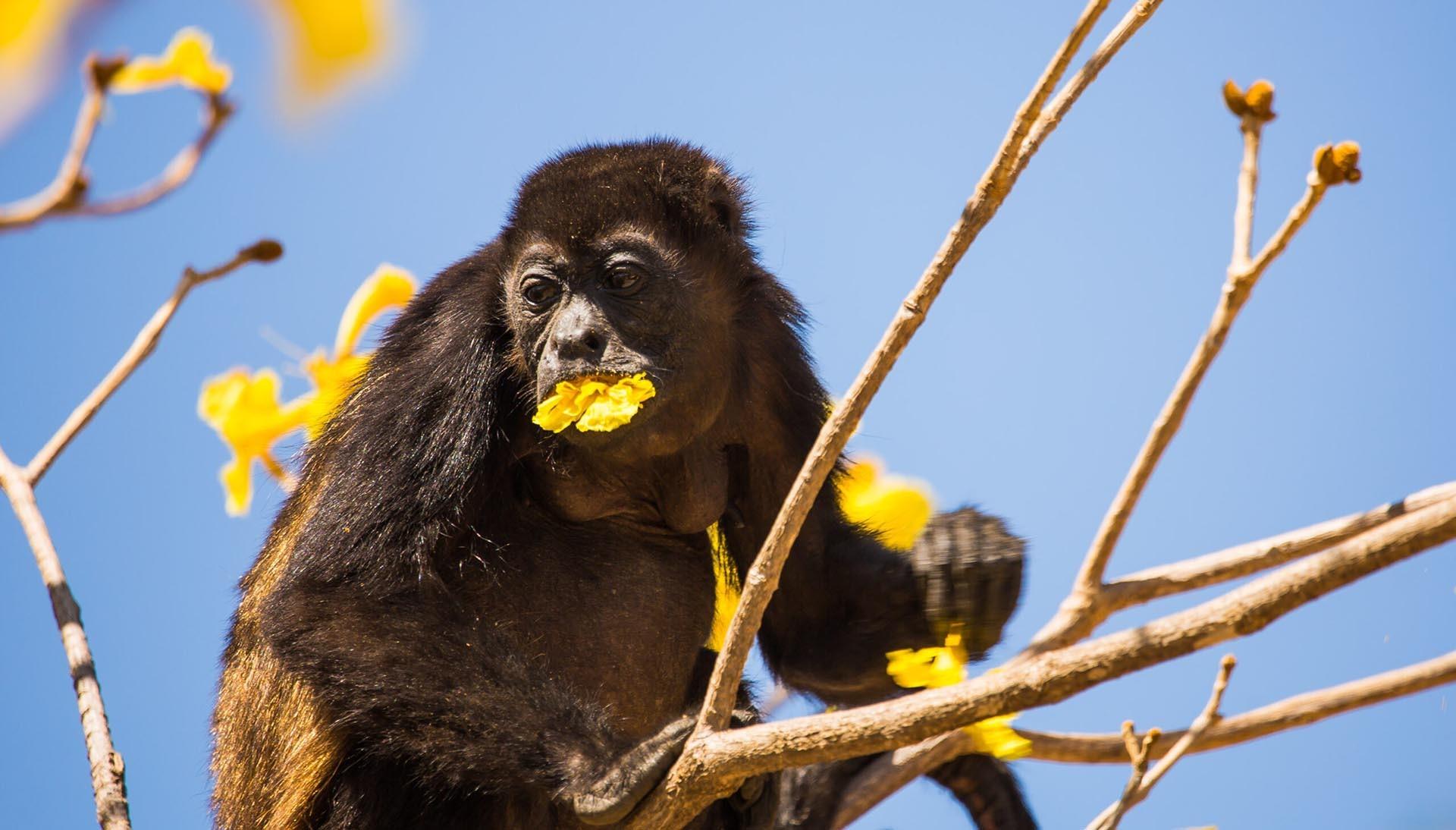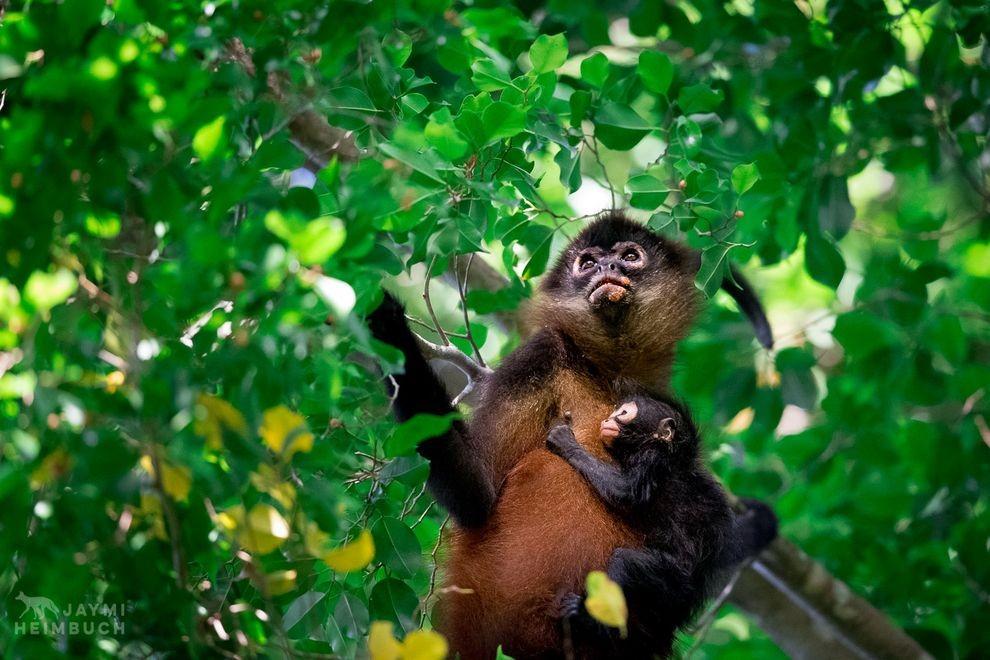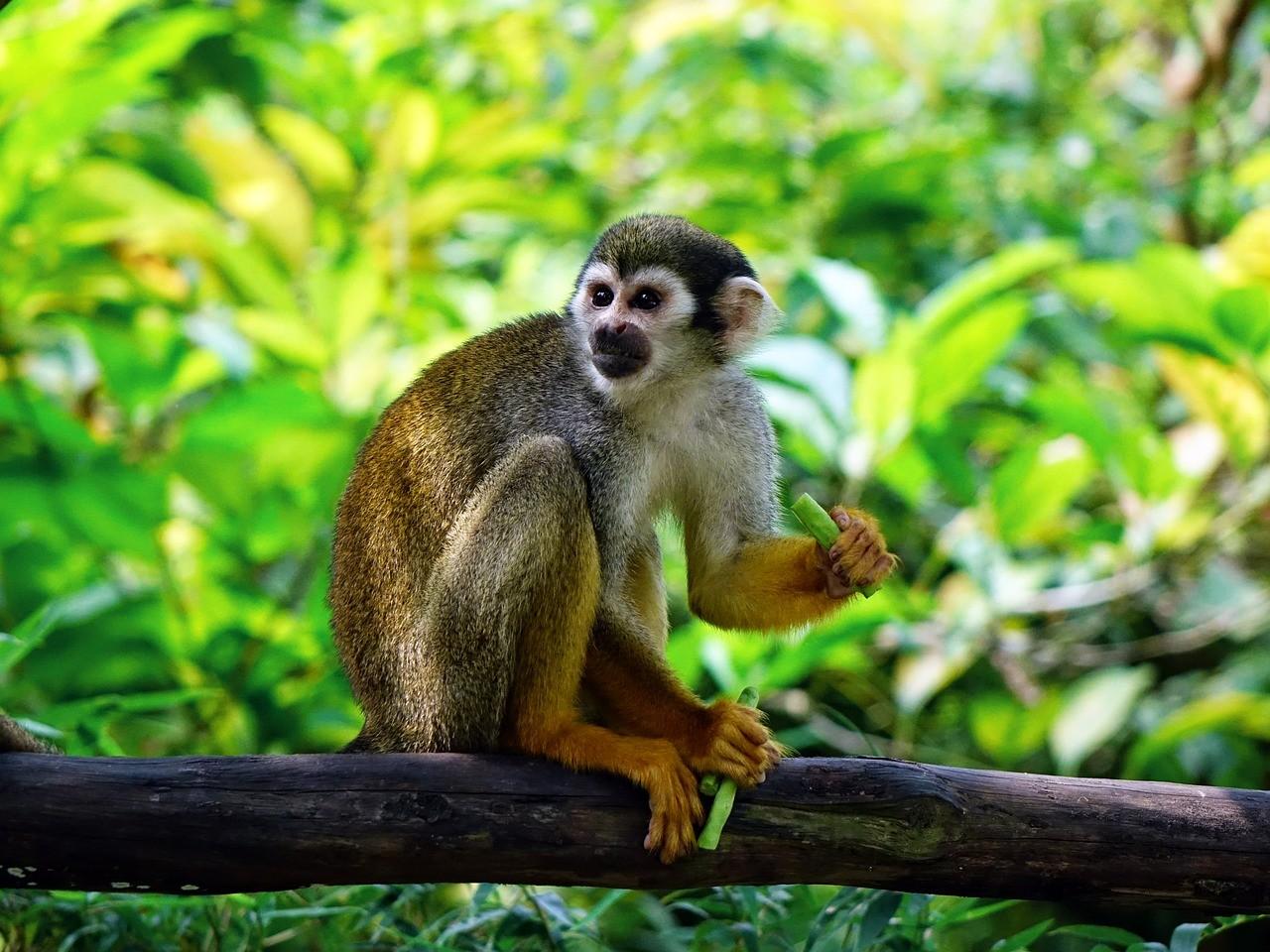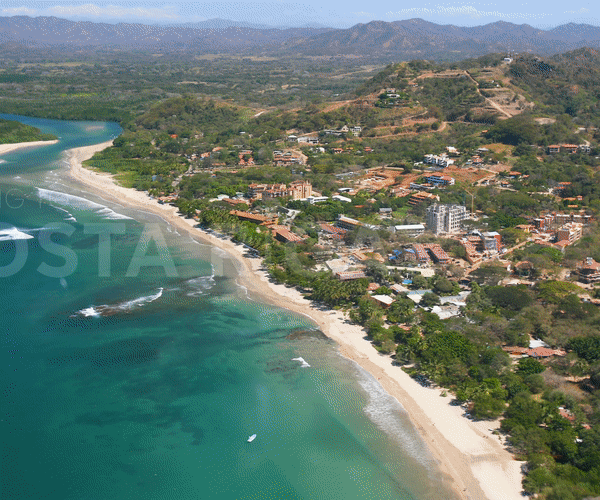Since moving to Costa Rica, when I speak to family or friends on the phone or whenever anyone visits, they always want to know about the monkeys or see them when they’re here. Unlike living in North America, you can see monkeys all over Costa Rica — even in your backyard!
Costa Rica is a biodiverse country home to four species of monkeys: the howler monkey, the spider monkey, the capuchin monkey, and the squirrel monkey. Each species has unique physical and behavioral traits that make them stand out.
The Howler Monkey

Howler monkeys are the largest of the four species known for their distinctive howling vocalizations that can be heard from miles away. They have black fur, their tales are longer than their bodies, and they’re slow-moving.
They are often found in the treetops, lazily lounging in the sun and munching on leaves. Unfortunately, they spend most of their day sleeping, so you may need patience to see them in action. In our neighborhood, we hear and see Howlers during our morning walks.
They move through the trees eating canopy leaves, nuts, fruits, and flowers. If our dogs spot them, they go crazy! We never worry about the dogs or the monkey’s safety because Howlers rarely, if ever, come to the ground. Everything they need, including water, is in the trees.
They are often found in the treetops, lazily lounging in the sun and munching on leaves. Unfortunately, they spend most of their day sleeping, so you may need patience to see them in action. In our neighborhood, we hear and see Howlers during our morning walks.
They move through the trees eating canopy leaves, nuts, fruits, and flowers. If our dogs spot them, they go crazy! We never worry about the dogs or the monkey’s safety because Howlers rarely, if ever, come to the ground. Everything they need, including water, is in the trees.
Their natural predators include the Jaguar, Puma, the Harpy Eagle found in South America, and even giant snakes.
The Spider Monkey

Spider monkeys are much more agile and acrobatic than howler monkeys. Their name refers to the long limbs that allow them to swing effortlessly through the trees. They live in groups of 30+ monkeys but spend much of their days alone through the canopies. Undisturbed rainforests are their favorite habitat.
They are curious and are often seen exploring their environment, using their dexterous hands to grab branches and pick fruits. They are more active than howler monkeys and can be easier to spot in the trees.
Your best chance of seeing a Spider Monkey is on a canopy tour. However, they are wary of humans because they are hunted. Being hunted and having their habitat threatened due to logging and land destruction are their most significant threats.
The Capuchin Monkey

Capuchin monkeys, also known as white-faced monkeys, are intelligent and resourceful. They are known for their intelligence and good response to training, which is why they are used so often in movies.
They are very social and are found in groups of between 10 and 40 members. They use sticks and rocks to break open nuts and fruits and can occasionally be found on the ground, unlike the Howler, looking for water. They will also adapt to their environment and eat what they can find, such as crabs and small lizards.
Their natural predators are crocodiles, birds, snakes, and large cats in Costa Rica's jungles.
The Squirrel Monkey

The squirrel monkey is the smallest in Costa Rica, only about 11-14 inches, and can only be found in Costa Rica and Panama. They move through trees very quickly, using their long tails for balance. They inhabit lowland rainforests in the South Pacific region of Costa Rica.
They can live in groups of up to 500 members and protect one another from predators such as large falcons, using their loud voices to warn of danger.
They live on fruits and insects but sometimes eat eggs, nuts, and seeds. They run on the forest floor to hide from their main predator, the falcon.
A Final Thought
The monkeys of Costa Rica are fascinating creatures and are a vital part of the country's rich biodiversity. When living in Costa Rica, you can observe these playful and curious primates while living amongst them.
We all must remember that we are visiting them and must respect their habitats.
Enjoy watching them and feel gratitude for living in such a fantastic place.
Pura Vida! 🌺




